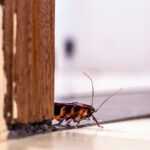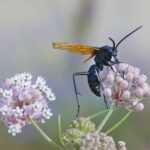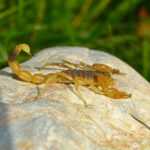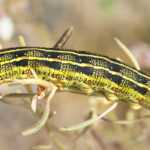How Long Do Cockroaches Live? Key Facts to Know
Wondering how long cockroaches live? Learn their lifespan, what keeps them alive, and tips to keep them out of your home.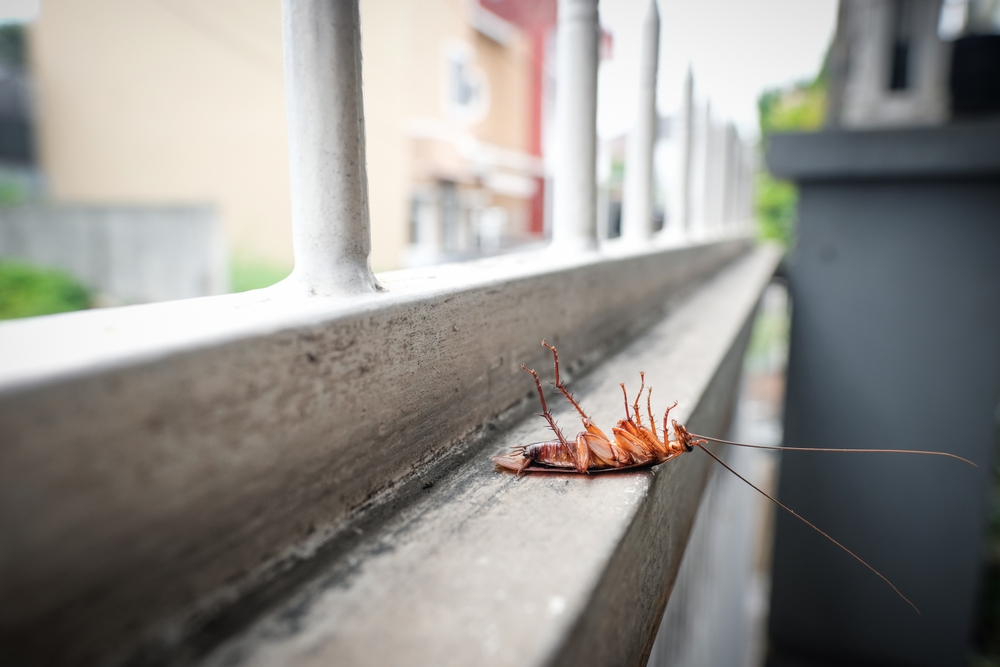
How Long Do Cockroaches Live? Understanding Their Lifespan and Life Cycle
Cockroaches are notoriously resilient, but how long do cockroaches live? On average, the lifespan of a cockroach can range from a few months to over three years, depending on the species and environmental conditions. In this article, we’ll break down the lifespans of various cockroach types and explore the factors that influence how long cockroaches live.
- Cockroach lifespans vary by species, with Germans living 20-30 weeks and Americans up to 3.5 years.
- Environmental factors like food availability, humidity, and temperature greatly influence how long cockroaches can survive.
- Early signs of cockroach infestations include droppings and egg casings, and effective pest control often requires a mix of methods or professional help.
Lifespan of Different Cockroach Species
Cockroaches are among the most resilient insects on the planet, but their lifespans can vary significantly depending on the species. For instance, the German cockroach, one of the most common household pests, typically lives for about 20 to 30 weeks. These pests are known for their rapid reproduction rates, making them particularly challenging to control once an infestation begins.
In contrast, American cockroaches can live over 3.5 years under optimal conditions. These larger roaches are often found in warmer climates and can be identified by their reddish-brown color. Oriental cockroaches, which thrive in cooler and damp environments, can cockroach live up to approximately 3.25 years. On the other hand, the brown-banded cockroach, another prevalent species, has a relatively shorter lifespan of around 1.12 years.
The lifespan of cockroaches is not just a matter of species but also heavily influenced by their environment. Factors like temperature, humidity, and food availability play significant roles in how long these pests can survive. Knowing the specific life spans of various cockroach species aids in devising effective pest control strategies.
Factors Affecting Cockroach Lifespan
Various environmental factors influence cockroach lifespans, making some conditions more favorable for their survival. The availability of food sources is one of the primary factors. As scavengers, cockroaches feed on a wide range of organic matter. Abundant food allows them to live longer and reproduce more rapidly.
Humidity levels are also vital for cockroach survival. These pests thrive in environments with moderate to high humidity. Excessive or insufficient moisture can significantly affect their lifespan. For example, German cockroaches prefer humid conditions, which is why they are often found in kitchens and bathrooms where moisture is abundant.
Temperature also plays a critical role. Various cockroach species have adapted to specific temperature ranges. For instance, American cockroaches prefer warmer climates, while oriental cockroaches thrive in cooler, damp areas. Understanding these factors helps homeowners make their homes less hospitable to cockroaches.
Life Cycle Stages of a Cockroach
Cockroaches undergo a fascinating and intricate cockroach life cycle that includes three main stages: egg, nymph, and adulthood. Each stage has unique characteristics and challenges, contributing to the resilience and adaptability of these pests.
The cycle begins with the egg stage, where female cockroaches lay eggs in protective casings called oothecae. These eggs then hatch into nymphs, which are essentially baby cockroaches.
The nymph stage is a period of growth and development, involving several molts before reaching adulthood. Finally, as adult cockroaches, they gain reproductive capabilities and continue the cycle.
Cockroach Eggs
The cockroach life journey begins in the egg stage, with females laying their eggs in leathery casings called oothecae. Egg numbers and incubation periods can vary significantly among cockroach species. For example, an adult female German cockroach can carry up to 55 eggs in a single egg case, which can hatch in about 2 weeks under optimal conditions.
American cockroaches, on the other hand, produce an average of 16 eggs per egg case, with the incubation period lasting around 6 to 8 weeks. These oothecae turn black within a day or two after being laid, signaling the beginning of the next generation. Brown-banded cockroaches are prolific breeders, with females capable of laying up to 250 eggs throughout their lifetime.
The egg stage is crucial for species survival, ensuring the continuation of the cockroach population. Knowing the egg-laying habits and incubation periods of various cockroach species aids in developing targeted pest control strategies to effectively disrupt their life cycle.
Nymph Stage
Once the eggs hatch, cockroaches enter the nymph stage, a critical period of growth and development. Nymphs are immature cockroaches, emerging from the eggs as wingless, smaller versions of adults. They go through several molts, shedding their exoskeletons multiple times as they grow.
The duration of the nymph stage can vary significantly among species. For instance, American cockroach nymphs can take up to 600 days to mature, while German cockroach nymphs typically molt about six times before reaching adulthood. Brown-banded cockroach nymphs undergo 6 to 8 molts, and oriental cockroach nymphs can mature after going through up to 10 instar phases.
In this stage, nymphs are vulnerable to environmental changes and predators. However, their rapid growth and high survival rates make them a formidable challenge in pest control. Proper identification and timely intervention during the nymph stage can greatly reduce the chances of a full-blown infestation.
Adult Cockroaches
Upon reaching adulthood, cockroaches gain wings and reproductive capabilities, marking the final stage of their life cycle. Adult cockroaches are primarily responsible for reproduction, ensuring the continuation of their species. For example, female German cockroaches can live for about 190 to 200 days, during which they can produce multiple egg cases.
Adult cockroaches are highly adaptable and can survive in various environments. They are known for their resilience and ability to thrive in harsh conditions. Their adaptability makes them particularly challenging to eliminate once they establish an infestation. Proper pest control measures targeting adult cockroaches are essential for breaking the cycle of a cockroach infestation.
Understanding the life stages from eggs to nymphs to adults provides valuable insights into their survival and reproduction. This knowledge is essential for developing effective pest control strategies targeting each life stage.
How Long Can Cockroaches Survive Without Food or Water?
Cockroaches are incredibly resilient and can survive in a variety of conditions, making them one of the most difficult pests to control. Many cockroach species can survive for up to a month without any food, thanks to their ability to slow their metabolism and enter a state of dormancy. This adaptability means that even in the absence of regular food sources, cockroaches are very unlikely to starve to death.
However, water is a different story. While cockroaches can survive for a significant amount of time without food, they cannot go as long without water. Most cockroach species can only survive for about a week without access to moisture. This is why you often find them in kitchens and bathrooms, where water sources are readily available.
Knowing these survival capabilities is crucial for effective pest control. Eliminating food and water sources makes your home less hospitable to these pests, reducing the chances of an infestation.
Signs of a Cockroach Infestation
Early identification of cockroach infestation signs can prevent more significant problems later. One of the most common indicators is the presence of cockroach droppings, which often appear as small, dark fecal spots. These droppings are usually concentrated in areas where cockroaches are most active, such as near food sources or potential shelters.
Another sign to look out for is the presence of cockroach egg casings, or oothecae. These have a leathery texture and a bean-like shape and can signal a growing population if found in your home. Additionally, finding body parts like legs or antennae can indicate a larger population of cockroaches nearby.
Awareness of these signs allows for timely action and intervention, crucial for preventing a full-blown infestation. Noticing any of these indicators means it’s time to consider pest control measures to tackle the problem effectively.
Effective Pest Control for Cockroach Infestations
A multi-faceted approach is required to manage a cockroach infestation. Combining baits, traps, sprays, and foggers is essential for successfully eliminating these pests. DIY methods can be effective for minor infestations, but it’s crucial to choose the right products and avoid over-reliance on foggers, which can be less effective.
For more severe infestations, professional pest control services are often necessary. Identifying infestation severity is crucial for selecting appropriate pest control measures. Due to their rapid breeding cycles, professional exterminators often require multiple treatments to manage cockroach populations effectively.
Understanding the lifespan and life cycle of cockroaches is essential for effective pest control. From the egg stage to adulthood, each phase of their life presents unique challenges and opportunities for intervention. By recognizing the signs of an infestation early and employing a combination of DIY and professional pest control methods, you can effectively manage and eliminate these resilient pests.
Knowledge is power when it comes to dealing with cockroach infestations. If you are armed with information, you are better equipped to tackle and prevent infestations, ensuring a healthier and more comfortable living environment.
Frequently Asked Questions
What does cockroach eat?
Cockroaches will eat just about anything organic, from sweets and meats to starches and even non-food items like hair and decaying matter. They’re not picky, so basically whatever’s available is fair game!
What do cockroaches hate the most?
Cockroaches really hate strong smells, so scents like cinnamon, citrus, and mint can help keep them away. Just sprinkle some of those around, and you’ll be cockroach-free!
Is it worth killing roaches?
Yes, it’s definitely worth killing roaches since they can spread diseases and create a health risk. Keeping your space clean and free of them is essential for your well-being.
Why should you not squish a roach?
You shouldn’t squish a roach because it can spread harmful bacteria like E. coli and Salmonella onto your surfaces, raising the risk of getting sick. It’s better to trap or remove them without making a mess!
How long do cockroaches live in your house?
Cockroaches usually live about two to three months as nymphs and around eight to ten months as adults. So if you’ve got them around, they can stick around for a while!
